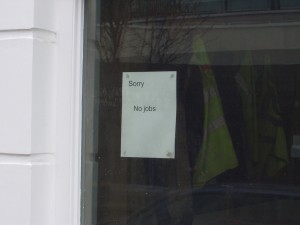It's Crowded at the Top (Ep. 125)
[omny:https://traffic.omny.fm/d/clips/aaea4e69-af51-495e-afc9-a9760146922b/14a43378-edb2-49be-8511-ab0d000a7030/ff1e0e78-0282-46b9-9c54-ab0d001a0487/audio.mp3]
Our latest podcast, “Crowded at the Top,” presents a surprising explanation for why the U.S. unemployment rate is still relatively high. (You can download/subscribe at iTunes, get the RSS feed, listen via the media player above, or read the transcript.)
It features a conversation with the University of British Columbia economist Paul Beaudry, one of the authors (along with David Green and Benjamin Sand) of a new paper called “The Great Reversal in the Demand for Skill and Cognitive Tasks“:
What explains the current low rate of employment in the U.S.? While there has substantial debate over this question in recent years, we believe that considerable added insight can be derived by focusing on changes in the labour market at the turn of the century. In particular, we argue that in about the year 2000, the demand for skill (or, more specifically, for cognitive tasks often associated with high educational skill) underwent a reversal. Many researchers have documented a strong, ongoing increase in the demand for skills in the decades leading up to 2000. In this paper, we document a decline in that demand in the years since 2000, even as the supply of high education workers continues to grow. We go on to show that, in response to this demand reversal, high-skilled workers have moved down the occupational ladder and have begun to perform jobs traditionally performed by lower-skilled workers. This de-skilling process, in turn, results in high-skilled workers pushing low-skilled workers even further down the occupational ladder and, to some degree, out of the labor force all together. In order to understand these patterns, we offer a simple extension to the standard skill biased technical change model that views cognitive tasks as a stock rather than a flow. We show how such a model can explain the trends in the data that we present, and offers a novel interpretation of the current employment situation in the U.S.
So it appears that, while returns to education remain strong, there are far too many highly educated workers for the available jobs. We also make note in the podcast of a new paper by Hal Salzman, Daniel Kuehn, and B. Lindsay Lowell which argues that, for all the hand-wringing about the U.S.’s inability to educate (or import) a sufficient number of STEM workers, there is in fact no shortage of such workers and that only half of U.S. STEM graduates end up with a STEM job.
We also make note of one potential silver lining in this “de-skilling” process, as Beaudry calls it: more highly educated workers may flow into fields like teaching. It’s worth noting that decades ago, when educated women had fewer job options than today, many of the best and brightest were teachers. Their outflow from the teaching ranks put a hurt on education in general. For further reading, see “Do Alternative Opportunities Matter? The Role Of Female Labor Markets In The Decline Of Teacher Supply And Teacher Quality, 1940-1990,” by Marigee P. Bacolod; and “Why the Best Don’t Teach,” by then-New York City schools chancellor Harold O. Levy.


Comments